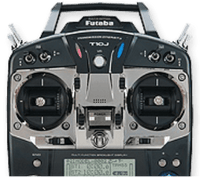The Right Glue For The Task
by Motion RCOnce you get started in the RC hobby, you will quickly learn the “must-have” tools and accessories you will always want on hand in your workshops and field boxes. The right glues and adhesives for the type of models you work with are imperative. Here are some of the most popular glues our staff and customers use for the types of products carried by Motion RC.
Cyanoacrylate (CA)

Most hobbyists refer to this as simply “CA” but even more commonly known as “Super Glue.” Hobbyists everywhere usually have some for their workshops and field boxes. Not all CA is the same however as It is available in variable viscosities and foam-safe versions which are super useful as the popularity of foam-electric aircraft continue to grow. The best part of CA is that it dries instantly when combined with some CA Activator or “Kicker” as it is commonly referred. Foam Pilots need to be certain they are using foam safe CA or they risk some glues eating through their foam.

Dry Time: Instant
Bond Strength: Medium
Uses: Balsa, Foam*, Fiberglass, Aluminum, Cloth, Metal, Plastics**, Pottery, Ceramics.
Pros: It dries instantly, is simple to use, comes in thin, medium and thick viscosities depending on what you need it for. When working with balsa, thin CA is great to wick into the wood fibers while repairing a foam fuselage, a thick viscosity is more useful. For the most part, it is relatively strong.
Cons: Can be brittle on some joints and are not recommended on parts that will flex or twist under load. Inevitably, you will mix CA and Kicker on your fingertips and experience a minor CA burn. Think of it as an unofficial hobbyist’s initiation.
We sell various CA glues from brands like Benchcraft and ZAP you can find here.
*Use Foam-Safe activator like this CA from Benchcraft here
**Most of the plastics used in this hobby will be okay, but always test a small area first.
Foam-Tac

Foam aircraft pilots everywhere should have some Foam-Tac in their field box. Foam-Tac works on EPO, EPP, and Depron but not EPS, it goes on easy, dries relatively quick (5-15 minutes) and can flex more easily under stress. It is perfect for foam hinging support and repair and is a great choice for building and repairing motor mounts, control horns and rods and attaching servos. We frequently use Foam-Tac to tac down and clean up the wiring in our planes in order to keep wires away from receiver antenna. It also works as a great thread locker when metal screws use plastic mounts as thread locker can eat plastic. The uses are almost endless.
Dry Time: 5-15 minutes
Bond Strength: Medium
Uses: Foam*, Styrofoam and insulating foam, Balsa, Carbon fiber, Canopies
Pros: If you are a foam pilots, Foam-Tac is always handy to have. Almost every fix on a foam aircraft can involve Foam-Tac.
Cons: Not rigid. When you require absolutely no flex, then epoxy or CA will be a better bet.
We sell various sizes of Beacon Foam-Tac and other specialty glues here
*Not EPP foam, be sure to check what type of foam your aircraft is.
Epoxy

Despite its rancid smell, Epoxy is undeniably one of the most used adhesives in modeling and for good reason. Classic two-part epoxy is strong and perfect for modeling part you want to make sure never leave their place. Epoxy is available in a wide range of set times where the longer set times means a better bond. Once you mix the resin and hardener you will work against the clock to align your parts and clean up and mistakes. Epoxy can be heavy and is not recommended on foam aircraft where weight is more of a concern. Epoxy really shine for balsa kit builders and assembly balsa ARF kits like our Blackhorse aircraft.
Dry Time: Varies by type (5 minutes to hours)
Bond strength: Strong
Uses: Wood, Metal, Concrete, Ceramics, Glass, Plastics, Anything.
Pros: You can be certain a properly mixed and applied epoxy joint is going to stand the test of time.
Cons: Mixing 2-part epoxy can be messy. Longer set times means you need patience. Not great for quick building.
Motion RC carries various epoxies from Benchcraft and ZAP here.
Thread Locker

Whenever you want to make sure your screws are secure and won’t back out, a dab of thread locker is your best friend. Thread locker is best served where metal meets metal as it will eat away plastics. RC aircraft, cars, boats and the like all deal with vibrations which over time can loosen screws. A tiny amount of thread locker will make sure your screws stay set for a long time.
Dry Time: 5-15 Minutes
Bond strength: Medium
Uses: Metal to Metal
Pros: Thread locker is fantastic to lock down motor mount screws, wing screws and much more. And a little bit goes a long way. It is not a permanent bond, so you can still back out a screw with a hand tool, but will secure the screw from backing out on its own.
Cons: People sometime accidentally use thread locker where metal screws meet plastic which is not recommended. Over time, the thread locker can eat away at plastic and cause a failure.
Find our thread lockers from Benchcraft and ZAP here.
Video:
Get the latest from Motion RC sale and product announcements
You can unsubscribe at any time!

Hobby Squawk Community Forum
visit forum
RC Knowledge Blog
visit blog
Guidance & advice for beginners
Find out more- Choosing a selection results in a full page refresh.
- Press the space key then arrow keys to make a selection.



